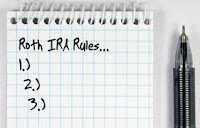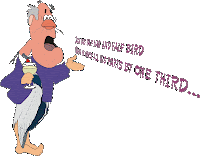This week's
Slott Report Mailbag answers
your questions on IRA rollovers, the Roth conversion conversation when dealing with Social Security benefits as added income, and inherited IRAs. We answer situational questions asked by individuals, couples, and parents who are searching for the best way to leave an inherited IRA to their daughters.
As always, we stress the importance of working with a competent, educated financial advisor to keep your retirement nest egg safe and secure. Find one in your area at this link.
1.
I transferred a stock from my IRA to my regular (non IRA account) and then transferred the exact same number of shares of the same stock back into my IRA within 60 days. However, the value of those shares was $10,000 higher.
Do I have a problem because I put more money into the IRA even though I transferred the same number of shares?
Thanks,
Mark
Answer:
There is no problem. Your distribution of property (shares of stock) from your IRA qualifies to be rolled over tax-free within 60 days only if the identical stock is rolled over to a receiving IRA. It is common for the value of stock to change during the 60-day window. That’s OK and still qualifies as a tax-free rollover. When your tax return is filed for the year, your tax preparer may want to attach a note to explain the different values.
2.
We currently have $460,000 in traditional IRAs. I am 65 years old and must start taking RMDs (required minimum distributions) at 70 1/2 years of age. We also have $150,000 in Roth IRAs over 5 years old. My wife and I are not consuming any IRA money at this point. I do have the funds to pay the taxes on conversion from outside the IRAs.
We are both on Social Security and a fixed benefit pension, but have low expenses and no outstanding debt. If we convert some of the IRAs each year from now to 70.5, it will make 85% of our Social Security taxable each year, while it is only taxed a small amount now. Would it be better to do it all the conversions in one year, bite the bullet and pay the higher tax rate, or do 10 or 20% each year, thus having to include 85% of our Social Security as income? What do you think?
Answer:
The taxation of your Social Security benefits is one of many factors to look at. Whether you should convert your IRA to a Roth IRA depends on many other factors. Basically, you must decide whether the future benefits of the Roth IRA (i.e., tax-free withdrawals) are better than the cost of paying taxes on the conversion.
IRA owners who have non-retirement plan money to pay the taxes on the conversion often benefit from a conversion because they are not depleting their tax-advantaged retirement plans to pay taxes. There are also benefits from a Roth IRA as an estate planning tool (i.e., to leave funds to heirs tax-free).
We recommend that you speak with a qualified advisor who can get more detailed financial and tax information from you to help you make the right decision.
3.
Our son died of cancer last year and left his approximately $85,000 taxable funds to my husband and myself, each getting half. However, his instructions were that the funds were to go to his four sisters. We rolled the funds over into an inherited IRA, with the plan of taking it out over 3 years, paying the taxes (we don't have enough income to pay taxes, but adding this amount will make it necessary for us to pay taxes on our Social Security, which we have never needed to do) expecting the girls to choose cash or rollover if one of us passes before the 3 years is out. The first distribution would be taken this December.
I am 79 and my husband is 90.
Is there any better way to do this to lessen the tax burden?
Answer:
We will assume that by taxable funds you mean that you inherited either an IRA or an employer plan from your son. We will also assume that you did a direct transfer of the funds from his IRA to a properly titled inherited IRA - example Son, deceased, IRA fbo Parent - and that a check was not payable to you.
Now, can you lessen the annual tax burden? Only by taking smaller distributions each year. Your husband’s required distribution should be less than $8,000 on his half of the inherited $85,000 and your required distribution would be even less than that. In addition to the income taxes owed on the IRA distribution and on your Social Security payments, you may also see an increase in your Medicare Part B premium two or three years from now as that is also based on your annual income. You might want to look at the tax costs if you empty the account in one year compared to the tax costs if you empty the account over three years to see which method will actually cost you less. You might also want to consider asking the girls to help you out with the tax costs.
This was an expensive way for your son to leave some funds to his sisters. It would have been better all around if he had simply named them on the beneficiary form. Then any taxes due would have been their responsibility, and if they had wanted to stretch out the distributions they could have done so over their own life expectancies.
In order for the girls to be able to keep the funds in an inherited IRA at your death, they must be named as successor beneficiaries of your inherited IRA. Distributions at your death (or at your husband’s death) would have to continue to be made using your life expectancy, not the life expectancy of the girls.
-By Joe Cicchinelli and Jared Trexler





















